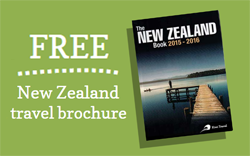Like many countries around the world, New Zealand is home to an indigenous people – rich in culture and history. Before heading out on one of our Māori culture tours, read this basic introduction on the culture and people, and impress your hosts with a few Māori words.
There is great debate as to when the first humans settled in New Zealand, but it is estimated to be no later than the 13th century. These people sailed in large waka (canoes) from East Polynesia (Māori people are of Polynesian in descent), and over the next centuries developed their unique culture.
Beliefs and mythology
A spiritual nature and an affinity with the land is a big part of Māori culture. There are many gods who govern the sky, sea and land – and there are many stories or myths to accompany these.
Important spiritual concepts govern the Māori culture too, and many are still in use today – such as the blessing of important objects or buildings.
Another widespread belief is that the sprits of the dead travel to Cape Reinga, the very top of the North Island, leaping off the headland and descending the roots of the ancient pohutukawa tree there to slide into the underworld.
Pa, whare, maraes and kai
During your Māori culture tour, you may be taken to see cultural buildings and sites.
A pa can refer to a village or defensive settlement, usually referred to as a hill fort that is terraced and fortified, though these days the word pa may be applied to any collection of Maori houses, generally near a meeting house.
The marae is a sacred meeting area where celebrations, funerals, events and important meetings take place.
The whare runanga (meeting house) is the central point of the marae, and certain behaviours are expected of guests or visitors when approaching or entering:
- All visitors must take part in a welcoming ceremony called a pōwhiri
- Remove shoes before entering the wharenui
- No eating or drinking in the wharenui – but it is permitted in the wharekai (dining room)
- Do not sit on tables, or pillows to be used for sleeping
- Do not step over people, or walk in front of people speaking
- Ask permission before taking photographs
Kai is the Māori word for food, and the most famous Māori food is the hangi – this is actually a style of cooking where food (usually meat, potatoes, kumara, pumpkin, bread, carrots and other vegetables) are cooked underground using heated rocks and steam.
Māori language
The Māori language (Te Reo) is one of the three official languages of New Zealand. Many cities, towns, streets, rivers and mountains have Māori names, and many buildings and government agencies utilise bilingual names.
It’s common for children to learn some Te Reo at school, with basic curriculum such as colours, numbers, common words and phrases, and songs (waiata). Even our national anthem is sung in both Māori and English. Here are some common words to try:
Kia ora – Used as an informal “hi” or “hello”
Aotearoa – The Māori name for New Zealand – its literal translation is to “land of the long white cloud”
Haere mai – Welcome, come
Haka – Māori dance or war dance
Hongi – The Māori greeting where noses are pressed together
Iwi – Tribe
Ka pai – Well done, or good job
Karakia – Prayer
Rangatira – Chief
Tāne – Man, men
Tēnā koe – hello (to one person)
Tēnā kōrua – hello (to two people)
Tēnā koutou – hello (to more than two people)
Wahine – Woman, women
Waiata – Song
Whanau – Family
We hope this has helped you with your journey on learning more about the indigenous people of New Zealand. Check out our past blog on three great Maori culture experiences in Rotorua for some ideas on your next Kiwi Travel NZ trip. Be sure to impress your friends and family with some new words, and don’t forget to ask your tour guide if you have any questions!
Photo credits:Māori Meeting House by Big Blue Ocean, CC-BY-SA-2.0






